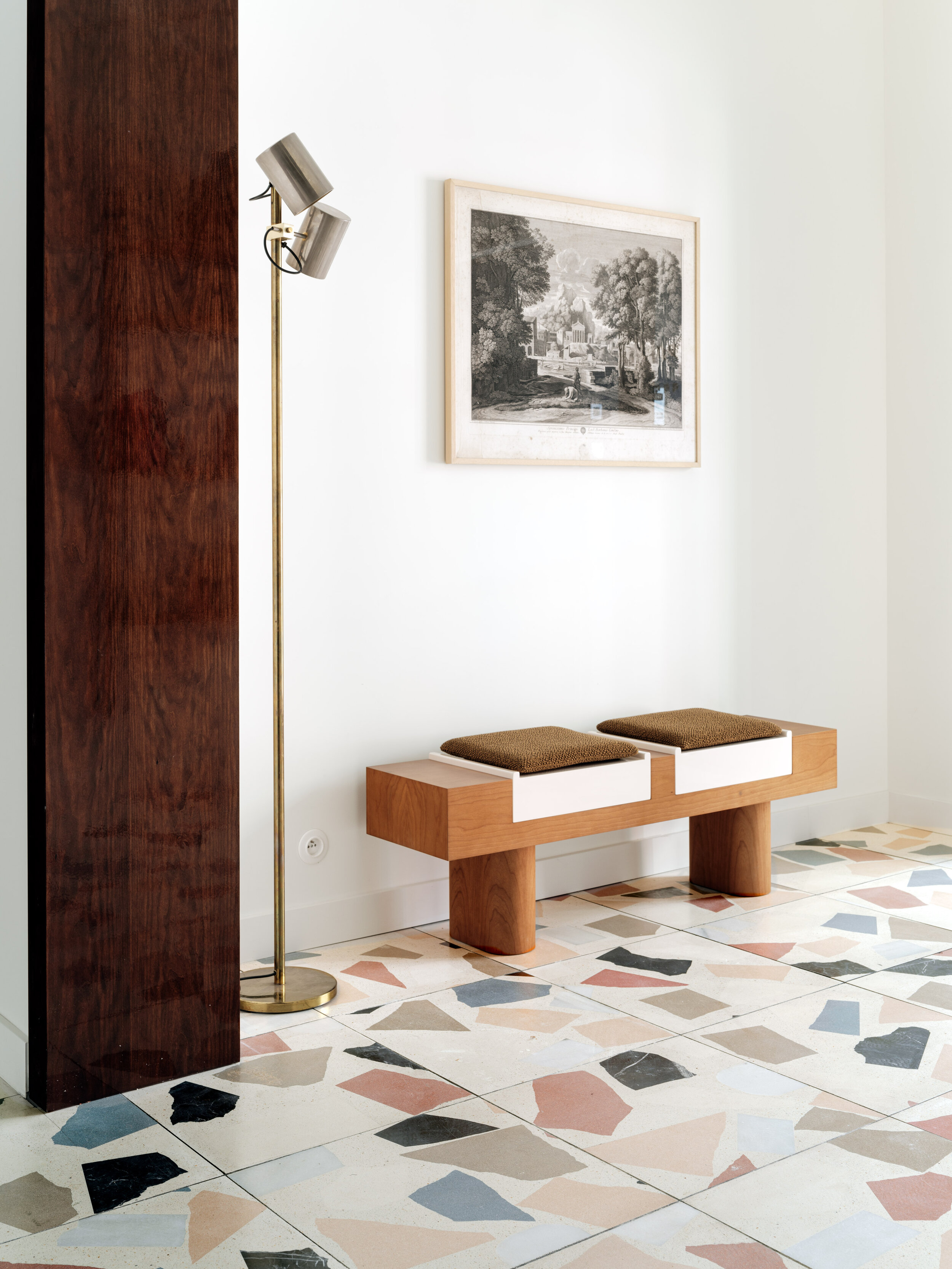Biel Huguet makes terrazzo with recycled materials
Photo by Luis Diaz
Biel Huguet runs Huguet - a cement business founded in 1933 in Mallorca, Spain by his grandfather. He took over the company when his dad died, and in doing so, pushed it to the next level to champion sustainable design. From kitchen sinks to tile floors, the company is growing in popularity around Europe.
In this interview, Biel talks with Reframe’s founder Bridget Cogley about how he got started, what it’s like working as a father and what makes design “good ”.
BC: What are you currently working on? Anything regarding sustainability?
BH: Almost everything we do nowadays is regarding sustainability. Sustainability is all around. So the scope is very big, from terrazzos with recycling natural materials such as marble, clay, glass or wood, to new applications with lime or new cements that are much more sustainable.
“We need to change the rules or the world our children inherit will be a disaster.”
BC: Can you tell us a little about yourself, and why you founded Huguet? What is it all about?
BH: I studied architecture and then engineering management, but my father died in 1996 when I was 23. He had a small, traditional company manufacturing cement products, which my grandfather established in 1933. In the 1960s until the 80s, people were not very interested in traditional or handmade construction, so the company was not in a very good position, and my father was more interested in culture (he was quite a well-known poet).
The company was not my goal, but when he died, I decided to take the company and push it forward to the recovery of traditional products and techniques. I also think of myself as very entrepreneurial.
Huguet counter and sink in a home. Photo by Luis Diaz
BC: What do you think about when you hear the word "sustainability"?
BH: I think about children, about my 2 sons. We need to change the rules soon, and strongly, or the world they are going to inherit from us will be a disaster.
BC: What’s the one major thing that has to happen right now to further efforts in sustainable design?
BH: I think it is already something unstoppable. All design has to be sustainable nowadays, and in the near future will be an obligation. Sustainability is an issue that no one can avoid.
Hotel Wallace in Paris with Huguet’s floor tiles
“The first thing that needs to happen is that people definitely have to change their minds.”
BC: Is there a technology or development you think we should adopt more broadly?
BH: The most important thing is not a technology, but knowledge and commitment. Such as manufacturing pieces that will last ages and, if necessary, and will be easy to recycle will be the main goals.
The first thing that needs to happen is that people definitely have to change their minds, especially in countries like ours (Spain).
We cannot keep growing this way. The times when only thinking about quantities has ended. It is now about quality. Well done things with quality, that will last a long time, has to be the rule.
We have been wasting a lot of resources, and we can no longer keep doing this. Quality and efficiency are the main values to keep. Things have to last (that also means good design, obviously). So sustainable products will become more and more important. And ours (that already are quite sustainable) has to go beyond. For instance, doing all products with recycled materials, with much more sustainable cements and processes.
BC: How do you think we can get more people on board with sustainability and care about materials, like Huguet?
BH: Talking about it is very important. And helpful. The governments have the main role in all these challenges, and all the people (especially architects) have to believe in it.
Architects and designers have a lot of power when deciding what are they going to use in their projects. Governments, people, and professionals have to believe in it. Then having nice, sustainable and “non-expensive” products will be easy to achieve.





